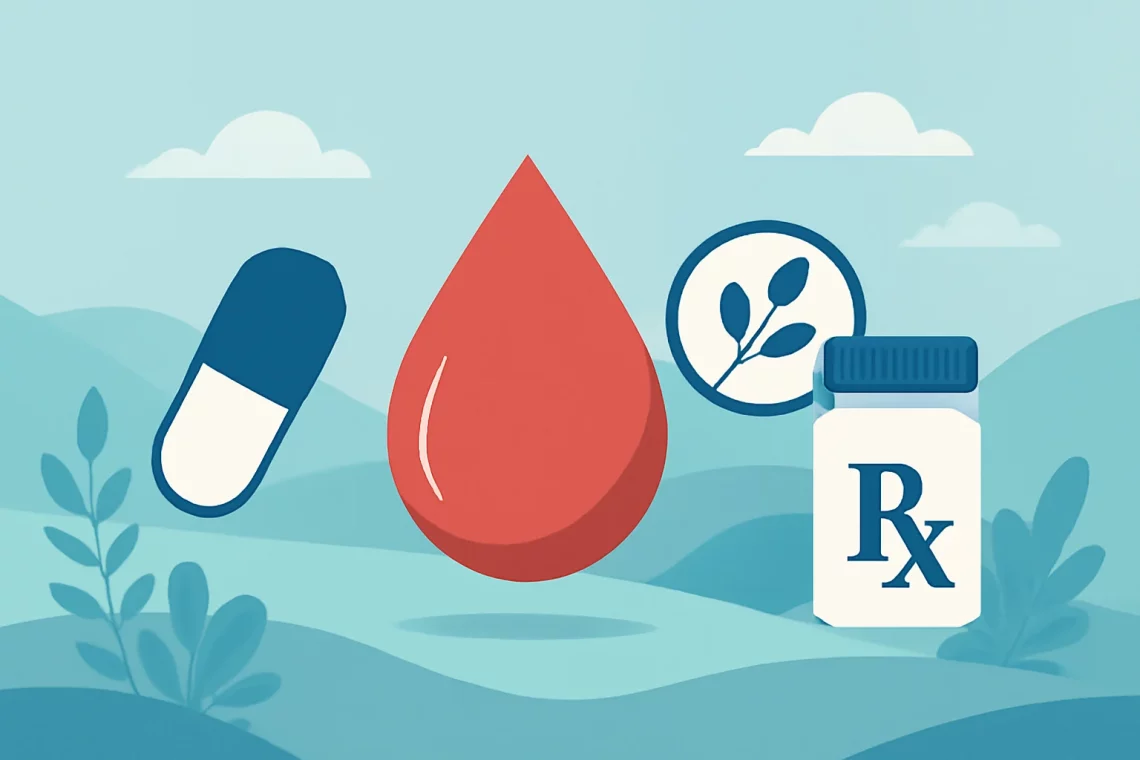
Rivaroxaban vs Apixaban: Choosing the Right Anticoagulant for You
Rivaroxaban and apixaban are two widely used anticoagulant medications that play a crucial role in the management of thromboembolic disorders. As blood thinners, they help prevent the formation of harmful blood clots that can lead to serious conditions such as stroke, deep vein thrombosis, and pulmonary embolism. The increasing prevalence of cardiovascular diseases, along with the aging population, has led to a greater demand for effective anticoagulant therapies.
Both medications belong to a class of drugs known as direct oral anticoagulants (DOACs), which have gained popularity due to their favorable safety profiles and ease of use compared to traditional anticoagulants like warfarin. Patients often face the dilemma of choosing between rivaroxaban and apixaban, as both options have their unique benefits and potential drawbacks. Understanding the pharmacological properties, indications, and side effects of these medications is essential for making informed decisions regarding treatment plans.
In the following sections, we will explore the key differences and similarities between rivaroxaban and apixaban, providing insights into their mechanisms of action, clinical uses, and safety profiles. This information will help patients and healthcare providers alike navigate the complexities of anticoagulant therapy.
Mechanism of Action
The mechanism of action of rivaroxaban and apixaban is one of the fundamental aspects that differentiate these anticoagulants. Both drugs function as direct Factor Xa inhibitors, which means they specifically target and inhibit the activity of Factor Xa, an essential enzyme in the coagulation cascade. By blocking this enzyme, they prevent the conversion of prothrombin to thrombin, ultimately reducing the formation of fibrin clots.
Rivaroxaban has a rapid onset of action, achieving peak plasma concentrations within a few hours of oral administration. This rapid action allows it to be effective for both the prevention and treatment of thromboembolic events. Apixaban, while also a direct Factor Xa inhibitor, has a slightly different pharmacokinetic profile. It is characterized by a more gradual absorption rate, with peak plasma concentrations occurring at around 3-4 hours post-dose. This difference can influence the choice of medication based on the specific needs of the patient.
Furthermore, the dosing schedules for these medications also vary. Rivaroxaban is typically administered once daily for most indications, while apixaban can be prescribed either twice daily or once daily, depending on the clinical scenario. The flexibility in dosing regimens can be a significant factor for patients, especially those who may have difficulty adhering to a complicated medication schedule.
Understanding the mechanisms of action and pharmacokinetics of these drugs is crucial for healthcare providers when determining the most suitable anticoagulant therapy for their patients. Both rivaroxaban and apixaban have demonstrated efficacy in clinical trials, but the choice between them may hinge on specific patient characteristics and preferences.
Clinical Indications and Uses
When it comes to clinical indications, both rivaroxaban and apixaban are approved for similar conditions, including the prevention of stroke in patients with non-valvular atrial fibrillation and the treatment and prevention of deep vein thrombosis (DVT) and pulmonary embolism (PE). However, there are subtle differences in their specific approved uses and patient populations.
Rivaroxaban is often favored for its indications related to orthopedic surgeries, such as total hip or knee replacement. It has been shown to significantly reduce the risk of DVT and PE in patients undergoing these procedures. This is particularly important in the postoperative setting, where immobility increases the risk of thromboembolic events.
On the other hand, apixaban has gained recognition for its role in the postoperative management of patients undergoing elective surgeries, as well as for its effectiveness in patients with a higher risk of bleeding. It is also utilized in patients with a history of recurrent venous thromboembolism, providing an additional layer of protection against clot formation.
Both drugs have been extensively studied in large clinical trials, demonstrating their efficacy and safety. The choice of which drug to use may depend on a variety of factors, including the patient’s individual risk factors, comorbid conditions, and potential drug interactions. Healthcare providers often consider these factors to tailor anticoagulant therapy to the specific needs of their patients.
In summary, while both rivaroxaban and apixaban have overlapping clinical uses, their unique indications make them suitable for different patient scenarios. Understanding these nuances can aid in making informed decisions regarding anticoagulation therapy.
Safety Profiles and Side Effects
When assessing the safety profiles of rivaroxaban and apixaban, it is essential to consider their side effects and the potential risks associated with their use. Both medications carry a risk of bleeding, which is a common concern for all anticoagulants. However, the degree of risk can vary between the two drugs.
Rivaroxaban has been associated with a higher incidence of major bleeding events compared to apixaban in certain patient populations. This has led to a more cautious approach when prescribing rivaroxaban, particularly in patients with a history of bleeding disorders or those taking concomitant medications that may increase bleeding risk.
Apixaban, on the other hand, has demonstrated a more favorable safety profile in clinical studies, particularly in elderly patients and those with multiple comorbidities. The reduced risk of major bleeding events makes it a compelling option for patients who may be more susceptible to adverse effects.
In addition to bleeding risk, both medications can cause other side effects, including gastrointestinal symptoms such as nausea and abdominal pain. However, these side effects are generally mild and transient. Kidney function should also be monitored closely, as both drugs are partially eliminated through the kidneys, and dose adjustments may be necessary in patients with renal impairment.
Patient education is critical in managing the risks associated with anticoagulant therapy. Individuals taking rivaroxaban or apixaban should be informed about the signs of bleeding and the importance of adhering to their prescribed dosing regimen. Regular follow-up appointments with healthcare providers can help ensure that any potential complications are identified and managed promptly.
In conclusion, while both rivaroxaban and apixaban are effective anticoagulants, their safety profiles and side effects can influence the choice of therapy. A thorough understanding of these factors is essential for healthcare providers to optimize patient outcomes.
Conclusion
Choosing between rivaroxaban and apixaban can be a complex decision that depends on various patient-specific factors, including clinical indications, safety profiles, and individual preferences. Both medications are effective in preventing and treating thromboembolic events, but their differences in mechanism of action, dosing regimens, and potential side effects warrant careful consideration.
Ultimately, the decision should be made collaboratively between patients and healthcare providers, taking into account the unique circumstances of each individual. Ongoing research and clinical experience will continue to inform best practices in anticoagulant therapy, ensuring that patients receive the safest and most effective treatment options available.
**Disclaimer:** This article is for informational purposes only and does not constitute medical advice. Always consult a healthcare professional for medical concerns or before starting any new medication.




